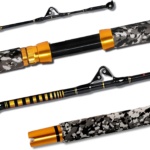So you’re ready to set sail on your boat and embark on a thrilling adventure, but before you untie those ropes and hit the open water, there’s an important task you shouldn’t skip: performing a pre-departure safety check. Ensuring that your boat is in optimal condition is crucial for a safe and enjoyable voyage. From checking the engine and fuel levels to inspecting the safety equipment, this article will guide you through the essential steps to take before setting off on your nautical journey. So grab your checklist and let’s dive into the world of pre-departure safety checks on boats.
Pre-departure Safety Check on a Boat
Before setting sail on a boat, it is crucial to conduct a pre-departure safety check to ensure the safety of everyone on board. This check involves inspecting various components of the boat to ensure they are in proper working condition. By following this checklist, you can be confident that your boat is ready for a safe and enjoyable trip on the water.
Check the Hull and Topside
The first step in the pre-departure safety check is to carefully examine the hull and topside of the boat. Look for any signs of damage, such as cracks, dents, or holes. Inspect the hull for any signs of water intrusion, as this could indicate a leak. Pay close attention to the keel and rudder, as they are essential for steering the boat. Additionally, check the topside for any loose or damaged fittings, such as cleats or railings.
Inspect the Engine and Fuel System
Next, it is crucial to inspect the engine and fuel system. Start by checking the engine oil to ensure it is at the proper level. Look for any signs of leaks or corrosion in the engine compartment. Inspect the fuel lines for any cracks or leaks and ensure they are securely connected. Check the fuel filters and water separators, and replace them if necessary. It is also important to verify that the fuel tank is secure and free of any leaks or damage.
Test the Electrical System
The electrical system is a vital component of any boat. Begin by testing the battery to ensure it is fully charged and securely connected. Check the wiring for any signs of damage or loose connections. Test all lights, including navigation lights, anchor lights, and interior lights, to ensure they are functioning correctly. Inspect the electrical panel and fuses, and replace any blown fuses as needed. Finally, test all electronic devices, such as radios and GPS systems, to ensure they are in working order.
Check Safety Equipment
Safety equipment is of utmost importance when it comes to boating. Verify that you have an adequate number of life jackets for all passengers on board. Inspect each life jacket for any signs of damage and ensure they are easy to access in case of an emergency. Check the expiration dates on any flares or signals you have on board, and replace them if necessary. It is also crucial to have a fire extinguisher readily available and in good condition.
Inspect Navigation and Communication Systems
Proper navigation and communication systems are essential for safe boating. Inspect the GPS or chart plotter to ensure it is functioning correctly and has up-to-date charts. Test the VHF radio and ensure you have a clear signal and proper communication with the Coast Guard or nearby vessels. Check the compass and ensure it is properly calibrated. Verify that you have all necessary charts and navigational tools on board.
Inspect the Bilge Pump and Plumbing
To prevent water from accumulating in the bilge, it is vital to inspect the bilge pump and plumbing. Test the bilge pump to ensure it is operational and can adequately remove water from the bilge. Check for any signs of blockages or damage in the bilge pump system. Inspect the plumbing, including hoses and fittings, for any leaks or signs of wear and tear. It is crucial to address any issues with the bilge pump and plumbing before setting sail.
Test the Steering System and Controls
The steering system is critical for maneuvering the boat safely. Test the steering wheel to ensure it turns smoothly and without any resistance. Check the cables or hydraulic system for any signs of damage or wear. Verify that the controls for throttle and gearshift are functioning correctly. It is important to have full control over the boat’s steering and propulsion systems.
Check the Anchoring System
A reliable anchoring system is essential when you need to secure your boat. Inspect the anchor and chain for any signs of damage or corrosion. Test the windlass or manual winch to ensure it is in good working condition. Make sure you have an adequate length of anchor line or rope on board. It is crucial to have confidence in your anchoring system to keep the boat secure when needed.
Inspect the Deck and Rigging
A thorough inspection of the deck and rigging is necessary for safety on a boat. Check the deck for any loose or damaged fittings, such as cleats or stanchions. Inspect the lifelines and rigging for any signs of wear or corrosion. Verify that all ropes and halyards are in good condition and properly rigged. Pay close attention to the mast and boom, ensuring they are secure and free of damage.
Test the Emergency Procedures
Finally, it is essential to test the emergency procedures on the boat. Review the location and operation of all safety equipment, including life jackets, fire extinguishers, and emergency flares. Practice deploying the life raft or any other emergency equipment you have on board. Familiarize yourself with the proper use of the boat’s radio and distress signals. By testing these emergency procedures, you can be prepared for any unforeseen situations that may arise.
In conclusion, performing a pre-departure safety check on a boat is a crucial step in ensuring a safe and enjoyable boating experience. By carefully inspecting the hull and topside, engine and fuel system, electrical system, safety equipment, navigation and communication systems, bilge pump and plumbing, steering system and controls, anchoring system, deck and rigging, and testing emergency procedures, you can have peace of mind knowing that your boat is ready for the adventure ahead. Remember to prioritize safety and always be prepared for any situation while on the water.





